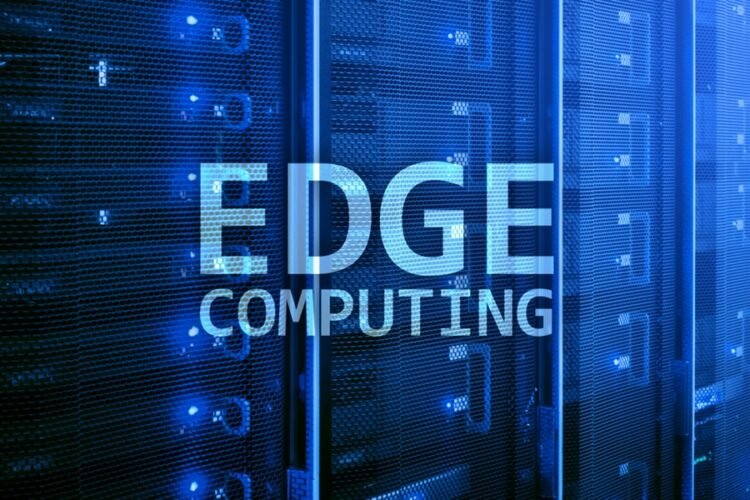
What is Edge Computing?
Edge computing refers to the practice of processing data closer to its source or the “edge” of the network, rather than relying on centralized data centers.
By bringing computing resources closer to their data sources or endpoint devices, edge computing decentralizes data processing and storage options. Unlike traditional cloud computing models, where data is transmitted to centralized servers for processing, edge computing enables localized processing at the network’s edge, minimizing latency and optimizing bandwidth utilization.
In the realm of modern technology, where speed, efficiency, and real-time data processing are paramount, edge computing presents an innovative approach to data processing and storage that promises to revolutionize how businesses and industries harness the power of digital information. Understanding edge computing is not just about embracing a new technology; it’s about unlocking unparalleled opportunities to enhance performance, improve responsiveness, and drive efficiency in a hyper-connected world.
Enhancing Performance and Responsiveness
A primary driver behind the adoption of Edge Computing is its ability to deliver superior performance and responsiveness for latency-sensitive applications. By processing data closer to where it’s generated, Edge Computing reduces the time required for data transmission and analysis, enabling real-time insights and faster decision-making.
For industries such as autonomous vehicles, healthcare, and industrial automation, where milliseconds can make a difference, Edge Computing offers a competitive advantage by ensuring timely and context-aware responses to critical events and scenarios.
Optimizing Bandwidth Utilization
Edge Computing also addresses the challenges associated with bandwidth constraints and network congestion. By offloading computational tasks to edge devices and gateways, organizations can reduce the volume of data transmitted over the network, minimizing bandwidth consumption and alleviating network latency.
This optimized data traffic management is particularly beneficial in scenarios where network connectivity is limited or unreliable, such as remote locations, industrial sites, or IoT deployments in harsh environments.
Facilitating Edge-to-Cloud Integration
While Edge Computing empowers organizations to process data locally, it does not operate in isolation. Instead, it complements existing cloud infrastructure, facilitating seamless integration between edge devices and centralized cloud platforms.
Through a hybrid Edge-to-Cloud architecture, organizations can leverage the scalability and computational power of the cloud for intensive workloads while capitalizing on the agility and responsiveness of Edge Computing for time-sensitive applications.
Addressing Security and Privacy Concerns
As organizations embrace Edge Computing, they must prioritize security and privacy considerations to mitigate potential risks and vulnerabilities. With data distributed across edge devices and gateways, ensuring data integrity, confidentiality, and compliance becomes paramount.
Implementing robust encryption protocols, access controls, and authentication mechanisms helps safeguard sensitive information and mitigate the risk of unauthorized access or data breaches, enhancing trust and confidence in Edge Computing environments.
Types of Edge Computing
Edge computing can be categorized into several types based on their deployment and functionality. Some common types include:
- Fog Computing: Fog computing extends the capabilities of cloud computing to the edge of the network, providing computing, storage, and networking services between end devices and cloud data centers. It aims to reduce latency and bandwidth usage by processing data closer to the source.
- Mobile Edge Computing (MEC): MEC brings computing resources and services closer to mobile users and devices, typically at the base station or access point of a mobile network. It enables low-latency, high-bandwidth applications and services for mobile users by processing data locally.
- Device Edge Computing: This type of edge computing involves processing data directly on IoT devices or endpoints, reducing the need to transmit large amounts of data to centralized servers for analysis. It enhances real-time processing capabilities and reduces reliance on constant connectivity.
- Cloudlet: Cloudlet is a small-scale cloud data center deployed at the edge of the network. It provides computational resources and services to nearby users or devices, enabling faster response times and improved performance for latency-sensitive applications.
- Distributed Cloud: Distributed cloud extends cloud computing resources to various locations, including edge devices, regional data centers, and other network points. It combines the benefits of centralized cloud computing with the advantages of edge computing, offering flexibility and scalability for diverse workloads.
These types of edge computing architectures cater to different use cases and requirements, providing efficient solutions for processing data at the network edge.
Embracing the Future of Edge Computing
As technology evolves and the Internet of Things (IoT) proliferates, the importance of Edge Computing will continue to grow. With the advent of 5G networks, the proliferation of IoT devices, and the rise of immersive technologies such as augmented reality (AR) and virtual reality (VR), Edge Computing is poised to become a cornerstone of digital transformation across industries.
By embracing Edge Computing, organizations can unlock new possibilities for innovation, drive operational efficiencies, and deliver compelling user experiences in a hyper-connected world defined by speed, agility, and intelligence.
